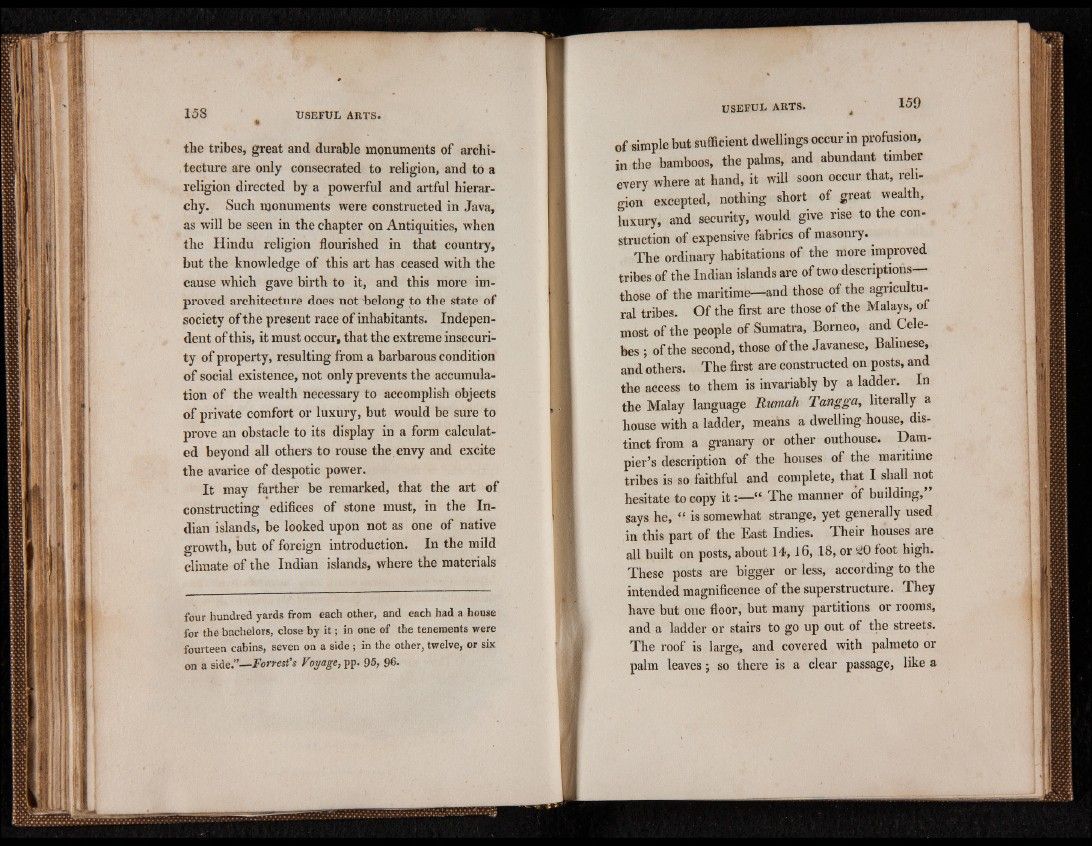
158 % U SE FU L A R T S .
the tribes, great and durable monuments of architecture
are only consecrated to religion, and to a
religion directed by a powerful and artful hierarchy.
Such monuments were constructed in Java,
as will be seen in the chapter on Antiquities, when
the Hindu religion flourished in that country,
but the knowledge of this art has ceased with the
cause which gave birth to it, and this more improved
architecture does not belong to the state of
society of the present race of inhabitants. Independent
of this, it must occur, that the extreme insecurity
of property, resulting from a barbarous condition
of social existence, not only prevents the accumulation
of the wealth necessary to accomplish objects
of private comfort or luxury, but would be sure to
prove an obstacle to its display in a form calculated
beyond all others to rouse the envy and excite
the avarice of despotic power.
It may farther be remarked, that the art of
constructing edifices of stone must, in the Indian
islands, be looked upon not as one of native
growth, but of foreign introduction. In the mild
climate of the Indian islands, where the materials
four hundred yards from each other, and each had a house
for the bachelors, close by i t ; in one of the tenements were
fourteen cabins, seven on a side ; in the other, twelve, or six
on a side.”—Forrest's Voyage, pp. 95, 96.
of simple but sufficient dwellings occur in profusion,
in the bamboos, the palms, and abundant timber
every where at hand, it will soon occur that, religion
excepted, nothing short of great wealth,
luxury, and security, would give rise to the construction
of expensive fabrics of masonry.
The o r d i n a r y habitations of the more improved
tribes of the Indian islands are of two descriptions—
those of the maritime—and those of the agricultural
tribes. Of the first are those of the Malays, of
most of the people of Sumatra, Borneo, and Celebes
; of the second, those of the Javanese, Balinese,
and others. The first are constructed on posts, and
the access to them is invariably by a ladder. In
the Malay language Rumah Tangga, literally a
house with a ladder, means a dwelling house, distinct
from a granary or other outhouse. Dam-
pier’s description of the houses of the maritime
tribes is so faithful and complete, that I shall not
hesitate to copy i t “ The manner of building,”
says he, “ is somewhat strange, yet generally used
in this part of the East Indies. Their houses are
all built on posts, about 14, 16, 18, or ¿0 foot high.
These posts are bigger or less, according to the
intended magnificence of the superstructure. They
have but one floor, but many partitions or rooms,
and a ladder or stairs to go up out of the streets.
The roof is large, and covered with palmeto or
palm leaves j so there is a clear passage, like a